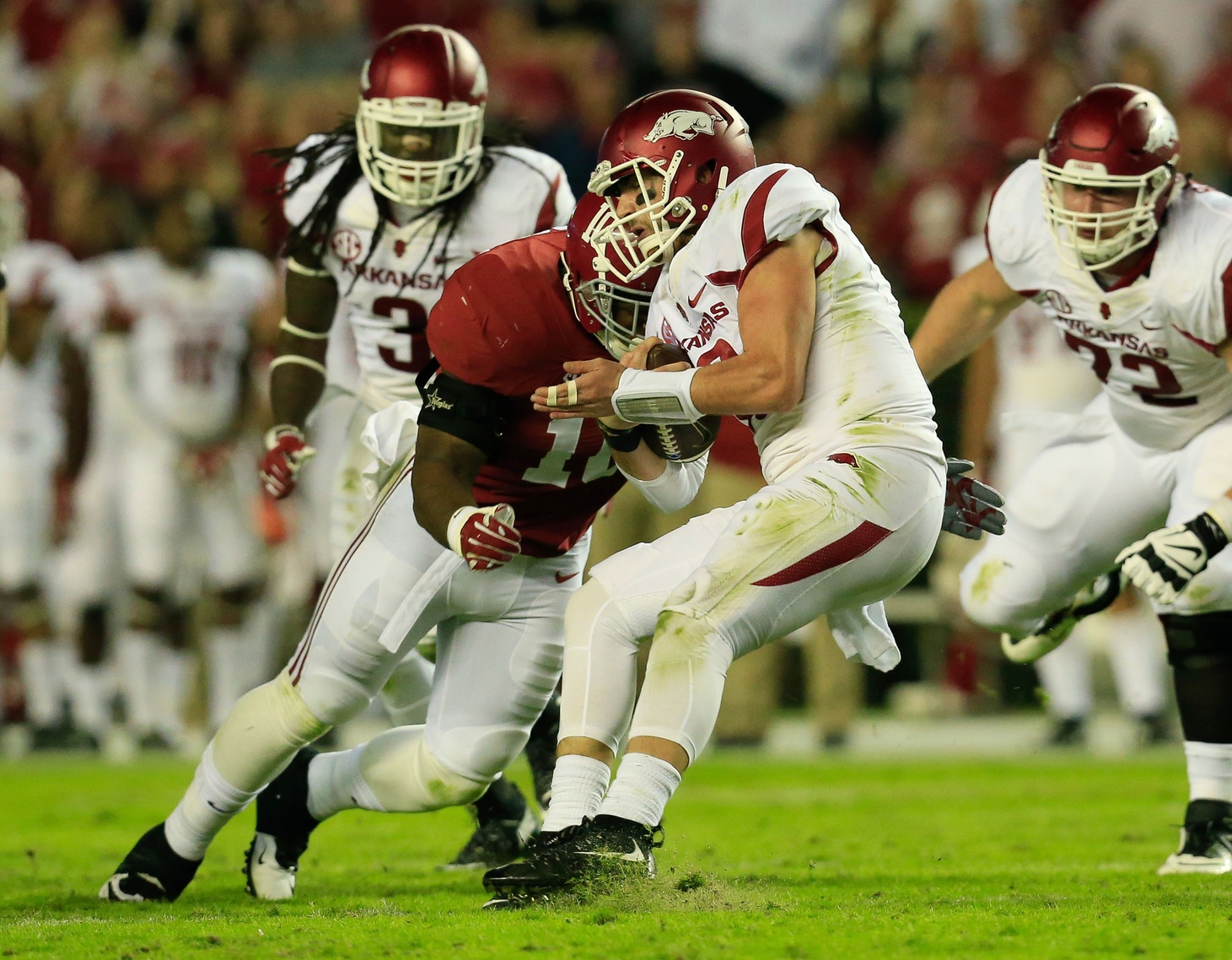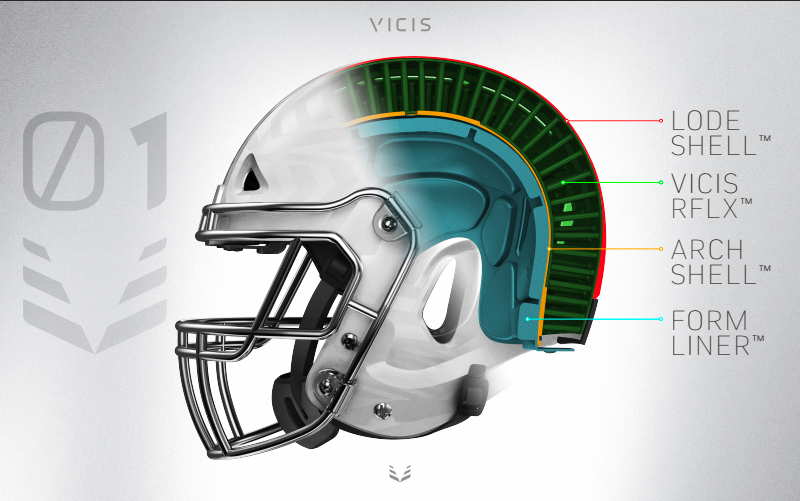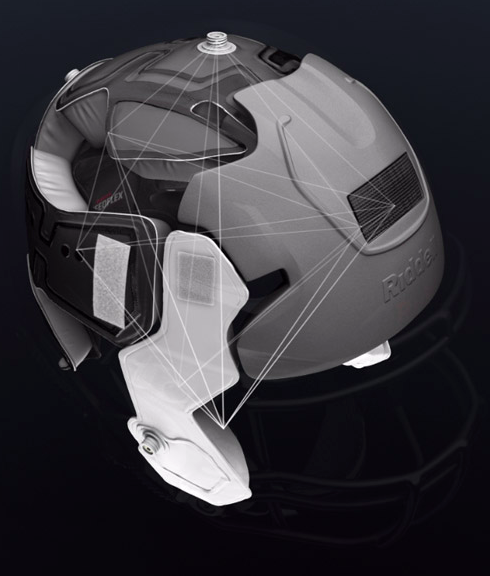
They won’t be playing a football game this season unless they meet in a bowl, but the Florida Gators and Washington Huskies are going to be in something of an experiment on the gridiron this season.
With critics of football’s safety getting louder as time goes by, the 2016 college football season will see these two teams showcasing the latest in helmet technology with the goal of increasing player safety.
For years, the football helmet industry has been dominated by Riddell. Every team in the Southeastern Conference uses their helmets, and this season five Gators, including center Cameron Dillard, will be wearing their newest prototype, the Precision Fit helmet, which is custom-fitted for every player who wears it.
But there is now a new company in Seattle looking to cut into Riddell’s market. This season, the University of Washington will wear helmets from VICIS Inc.
Two years ago, VICIS, along with its research team at the University of Washington, was awarded $500,000 from the NFL, Under Armour, and General Electric for defeating 500 competitors over four rounds of scientific review to win “Head Health Challenge II,” a search for solutions that prevent, measure and detect brain injury.
A prototype was developed within the last year, and even briefly examined by Steve Kroft on “60 Minutes.” Former Tennessee defensive back-turned-sportscaster Charles Davis is part of the player coalition of VICIS, Inc., a group described by Bill Osborn, a former University of Pittsburgh wide receiver and current Panthers color commentator who also is the Vice President of Business Development for VICIS, as ambassadors of the helmet.
The concept of VICIS’ ZERO1 helmet is to absorb impact much the way an automobile bumper does. Its outer shell is softer and slows impact by deforming. The second layer, made of columns, allows this shell to bend. The third shell is harder, similar to the traditional outer shell of a helmet, protecting the skull. A fourth shell serves as the helmet’s liner.

“We’re not approaching this as a sporting goods company. We’re a technology company powered by scientists, neurosurgeons and engineers. Our helmet features ideas never before included in football helmets,” said Ray Vincenzo, a public relations official for VICIS.
However, taking on Riddell is a bold move. After all, Riddell has been the innovator in football helmet design for 76 years.
Consider the plastic football helmet was invented in 1939 by John Riddell, a high school football coach from Evanston, Ill., who later founded the company that bears his name. Debuting on Oct. 5, 1940 on Northwestern football players in their game at Syracuse, the plastic football helmet was originally devised to prevent skull fractures.
Now Riddell’s focus is on concussions, an injury caused by the brain being shaken in the skull.
While concussions come in three forms, from the first degree when a person remains conscious to the third degree when consciousness is lost, afterwards there are post-concussion symptoms ranging from headaches and nausea to lapses, dizziness and difficulty concentrating that could last for as little as a few minutes to as long as a lifetime depending on the severity or frequency of occurrence.
Discovery Health reports when someone has experienced three or more concussions, their risk for early-onset Alzheimer’s is five times more likely.
For Riddell, its attempts to reduce concussions on the gridiron go back to the start of the century. In 2002, the company designed the “Revolution” helmet to replace its existing model, known as the “VSR-4.”
“It was the first helmet redesign in 25 years,” said Erin Griffin, a spokesperson for Riddell. “It offered greater shell offset, meaning a greater distance between the shell and the head.
“It has patented side impact protection. From research, we found many impacts were from the side and face. The Revolution extended the helmet to the jaw and mandible area, not only the shell but energy absorbing materials.”
In 2008, Riddell introduced the “Speed” helmet. “This took a lot of the learning and redesigned shell and facemask and had a comfort fit over liner,” Griffin said. “From a look standpoint, it was more appealing, and the ‘Speed’ helmet was the first to receive a 5-STAR rating from Virginia Tech.”
STAR is an acronym for Summation of Tests for the Analysis of Risk. To achieve a 5-STAR rating, a helmet must project to yield fewer than 0.3 concussions per season per player.
“We take information on the field and take exposure, how hard and what direction, and take it to a lab test,” said Dr. Stefan Duma, the Head of the Virginia Tech-Wake Forest School of Biomedical Engineering and Sciences that runs the tests. “The ratings show lowering head acceleration lowers your risk of concussion.”
To determine these ratings, nearly 63,000 “head acceleration data points” were collected. A season’s worth of impacts and 32 measured concussions were among the data used to assess the risk of the injury. The data is then broken into 24 weighted tests and compiled into a rating.
Virginia Tech’s research found players in VSR-4 helmets sustained 8.37 concussions by 100,000 impacts, whereas players in Revolution helmets sustained 3.86.
Last year, 13 different football helmet models available to the public, made by Riddell, Schutt, Rawlings, SG, and Xenith, had 5-STAR ratings.
Their current state-of-the-art model on the market is the SpeedFlex, which built on 2011’s Riddell 360 helmet designed to combat frontal collisions and has Griffin gushing.
“The SpeedFlex reduces impact force transfers by adding flexibility to key helmet components,” she explained. “The hinge clip and facemask materials are now flexible. The most notable feature is the hinge point: a U-shaped flexible hinge point in the front of the shell that flexes on impact. The flexes are injected into the helmet shell. Similar features were on the 360, but this hinge on the flex point, the crown of the helmet, is completely new to football. We also redesigned how the chinstrap is attached.”

But if the experiment with Dillard and 80 other college football players this season is successful, future helmets may be safer by having them custom fit to a player’s head.
In May, scans were made of several Florida football players with a 3D iPad video application to fit within 1/20,000th of an inch of the exact shape of their head.
“No two heads are the same,” Griffin said. “When you utilize 3D scanning technology, you can take the interior of the helmet specific to the player.”
These changes have not been without criticism. In 2013, Riddell was sued by Colorado high school football player Rhett Ridolfi after he was injured in a helmet-to-helmet collision wearing a Revolution helmet. A jury found that its helmet was not defective, but Riddell had been guilty of exaggerating its safety and ordered Riddell to pay Ridolfi more than $3 million.
The order was affirmed in part, reversed in part, and the case remanded with directions on appeal.
Concussions are caused when a blow makes the head move rapidly, and critics of Duma’s grading system say it does not take into effect angled, rotational blows that would make the head rotate around its center of gravity that make the brain stretch and twist at the same time.
It is universally accepted by almost all parties, including helmet manufacturers, that no helmet on the market can completely eliminate concussions.
However, Dr. Timothy Gay, a University of Nebraska physics professor, has theorized it is possible to construct such a helmet that would eliminate concussions, but it would take 15 inches of foam rubber on the outside of the shell to be effective.
That would be a tough sell. As Osborn says, “For the NCAA and NFL (a helmet) has to look as good as any helmet that’s out there.
But consider former Auburn offensive lineman Steve Wallace, who wore a ProCap wrapper around his helmet when he played for the San Francisco 49ers and Kansas City Chiefs from 1986-97.
In hindsight, with the extra cushioning, Wallace might have been ahead of his time.
The question now is if the helmets being worn by Dillard and the University of Washington among others this season are.







